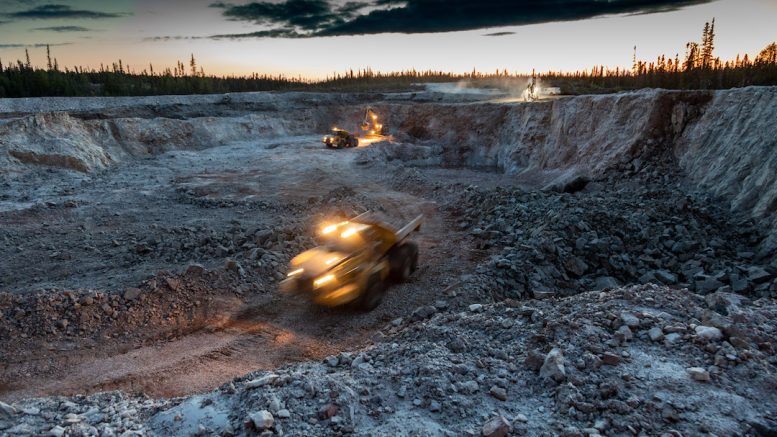China, the world’s biggest producer of magnet rare earth oxides could stop exporting the group of minerals within the next decade due to increasing domestic demand and a shortage in global supply, said Ryan Castilloux, founder of the independent research group, Adamas Intelligence.
The global demand for rare earths, which are employed in a range of applications including permanent magnets used in electric vehicles (EV) and renewable energy devices, has increased in recent years as the world looks to meet its decarbonization goals.
In a report published in April, Adamas said that the lack of new primary and secondary supply sources for rare earth oxides in the market from 2022 onwards, coupled with the inability of existing producers to increase their output, will create a major neodymium-praseodymium (NdPr) oxide shortage by 2035.
“If we consider that China is responsible for about 90% of the world’s neo magnet production today and 70% of the demand for those magnets exists in China, and then we consider…around one-third of the market to be unsatisfied by 2035, we can quickly begin to see the calculus that China is going to be faced with,” said Castilloux at a webinar on rare earths organized by BMO.
“Do they sell magnets to the domestic market to empower automakers to create their EVs…or do they simply export the magnets to a fridge manufacturer in Nebraska or Turkey? I think the decision is clear,” he added.
The Adamas Intelligence head added that the possibility of China halting its exports is “beginning to crystallize” with decision makers in North America where steps are being taken to address the challenge, but less so in Europe, which is more optimistic about the Asian juggernaut being able to “continuously deliver,” as they have done over the past 20 years.
By 2035, the research group expects the production of rare earths to more than double and add about 300,000 tonnes, compared to 2021. But that would still not be enough to keep up with the annual growth in demand of 8 to 10%.
“Last year global production was about 250,000 tonnes or so…we are looking to do a century’s worth of work in 12 years, which is formidable, but still won’t be enough to meet the tripling of demand,” said Castilloux, while speaking to BMO analyst Robin Fiedler.

REE-mineralized rock at Great Western Minerals’ Steenkampskraal rare earths project, 350 km north of Cape Town, South Africa. Credit: Great Western Minerals.
By 2035, Adamas expects China to double its production, see another 50,000 tonnes from new projects, 25,000 tonnes from expansions and another 25,000 tonnes from recycling.
Elaborating on how rare earths are recycled, Castilloux explained that a major portion of the materials in this category are derived not from end-of-life products, but from cuttings and working scrap. Those remnants are generated from the shaping of large magnetic blocks, such as those that go into EV motors.
Scraps make up about 25 to 30% of the magnet rare earth oxide supply annually.
“On the other side of the recycling point… there’s a recognition that a lot of rare earths go to waste yards…because they are often used in small amounts in technologies…it’s a challenge to bring them together and recycle them,” said Castilloux.
The Adamas managing director also spoke about the difficulties of producing and recovering rare earths and how companies in China and Japan are more advanced in the sector compared to their counterparts in North America and Europe.
According to Castilloux, there are about 42 advanced rare earth projects globally, out of which just two are currently in the process of developing mines.
“It is a technically challenging business… it’s one thing just to say that I am going to produce neo magnets, but you also need to consider which grades are you going to produce, who are your customers, and what are their specifications… it’s a very dynamic business, one which the west doesn’t have the experience…we kind of need to re-invent the wheel on that,” he said.
He added that producers in Japan and China have gained a “tacit knowledge” around magnets which help in minimizing the “costly and scarce” dysprosium and terbium inputs used in those magnets, giving producers advantages with costs and technology.
“So collectively trying to kind of put all that in a basket and beginning to produce magnets in the US or Europe is absolutely a major challenge and getting the human resource to come in is the icing on top of that challenging cake,” said Castilloux, adding that he doesn’t expect rare earths to be replaced in products any time soon.
In terms of the price forecast, Castilloux expects prices of rare earths to increase until 2025, after which he envisions rates will plateau by 2029 due to bottlenecks in EV production caused by supply shortages, after which he expects prices to rise again.


Be the first to comment on "As demand for rare earths rises, the world’s biggest producer might stop exporting them, says analyst "